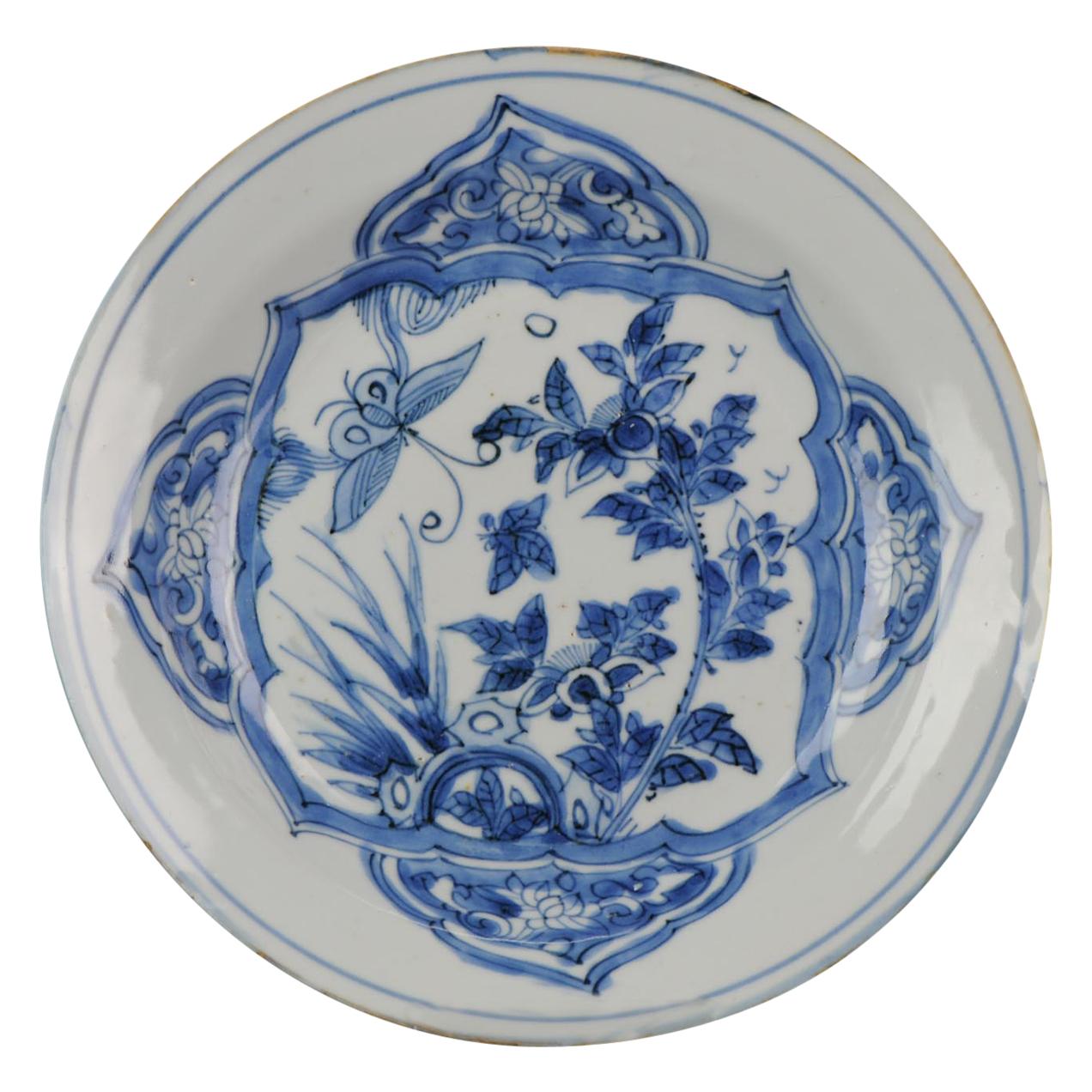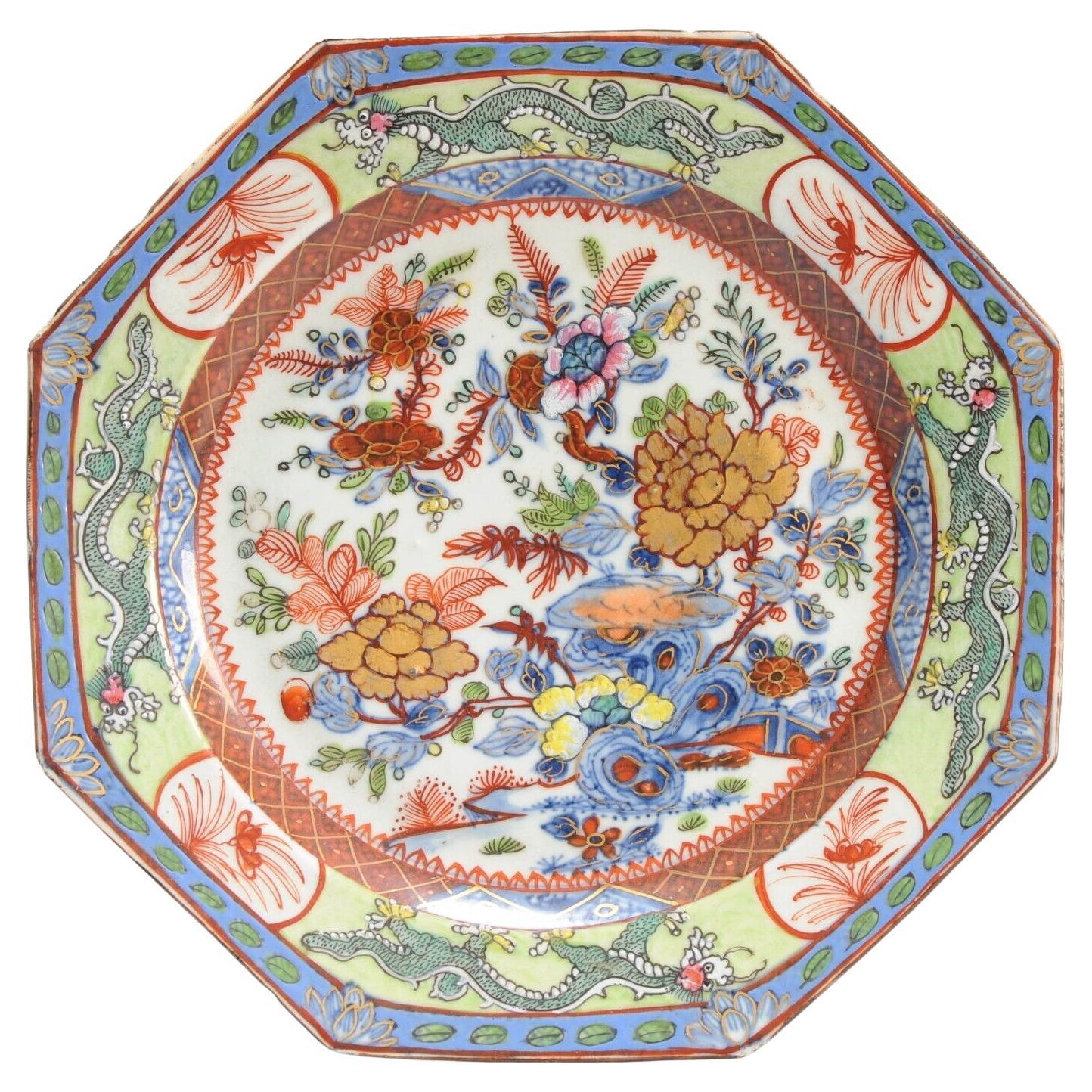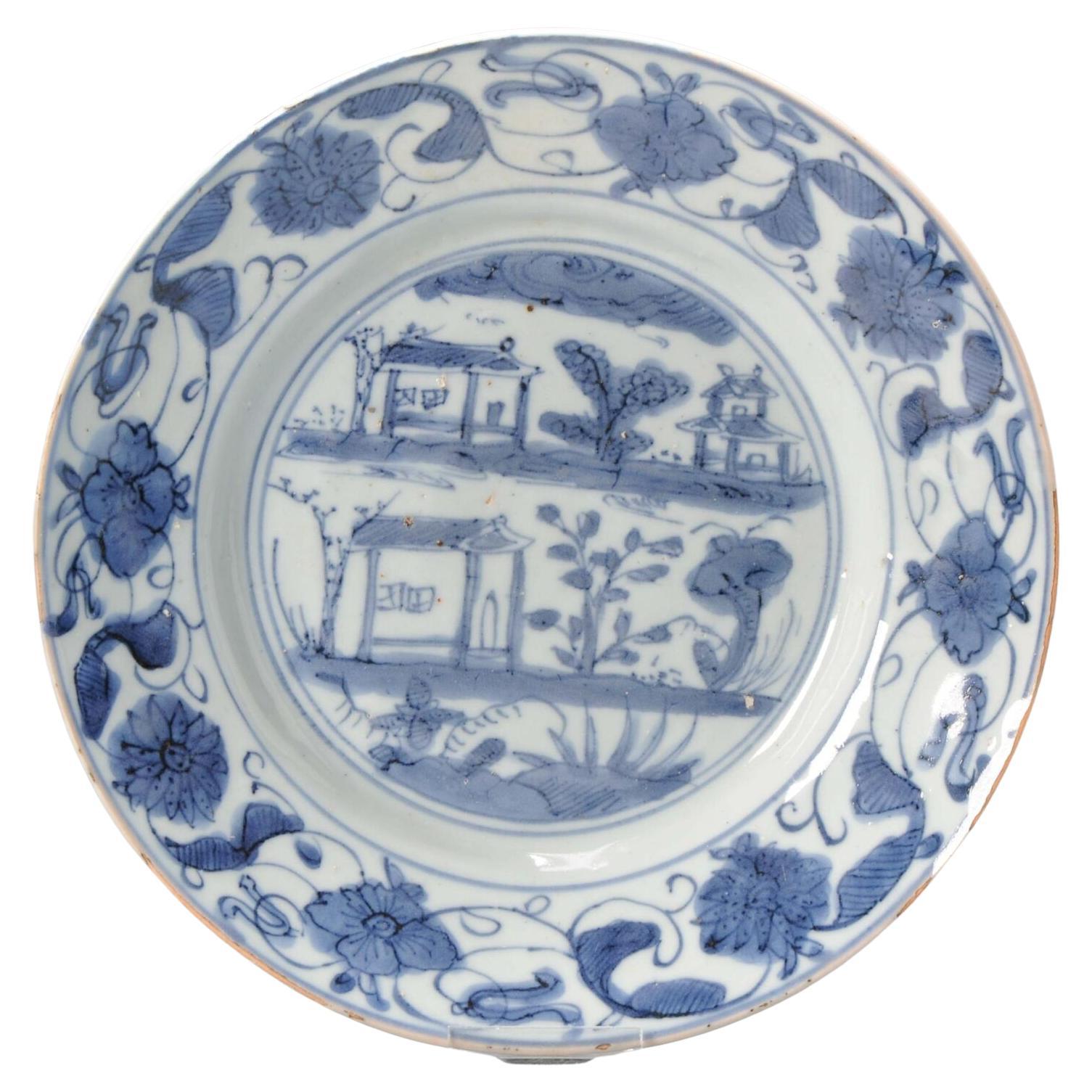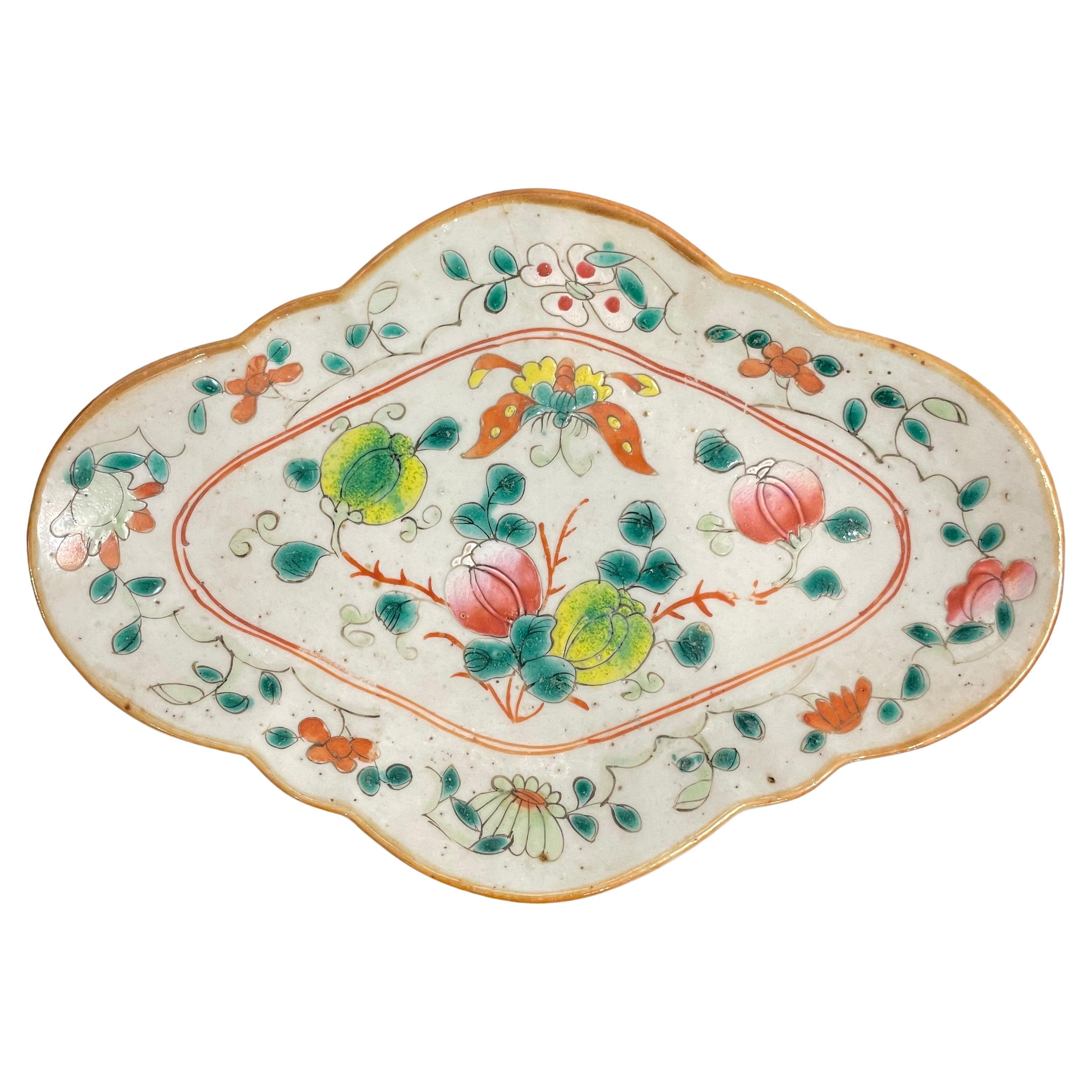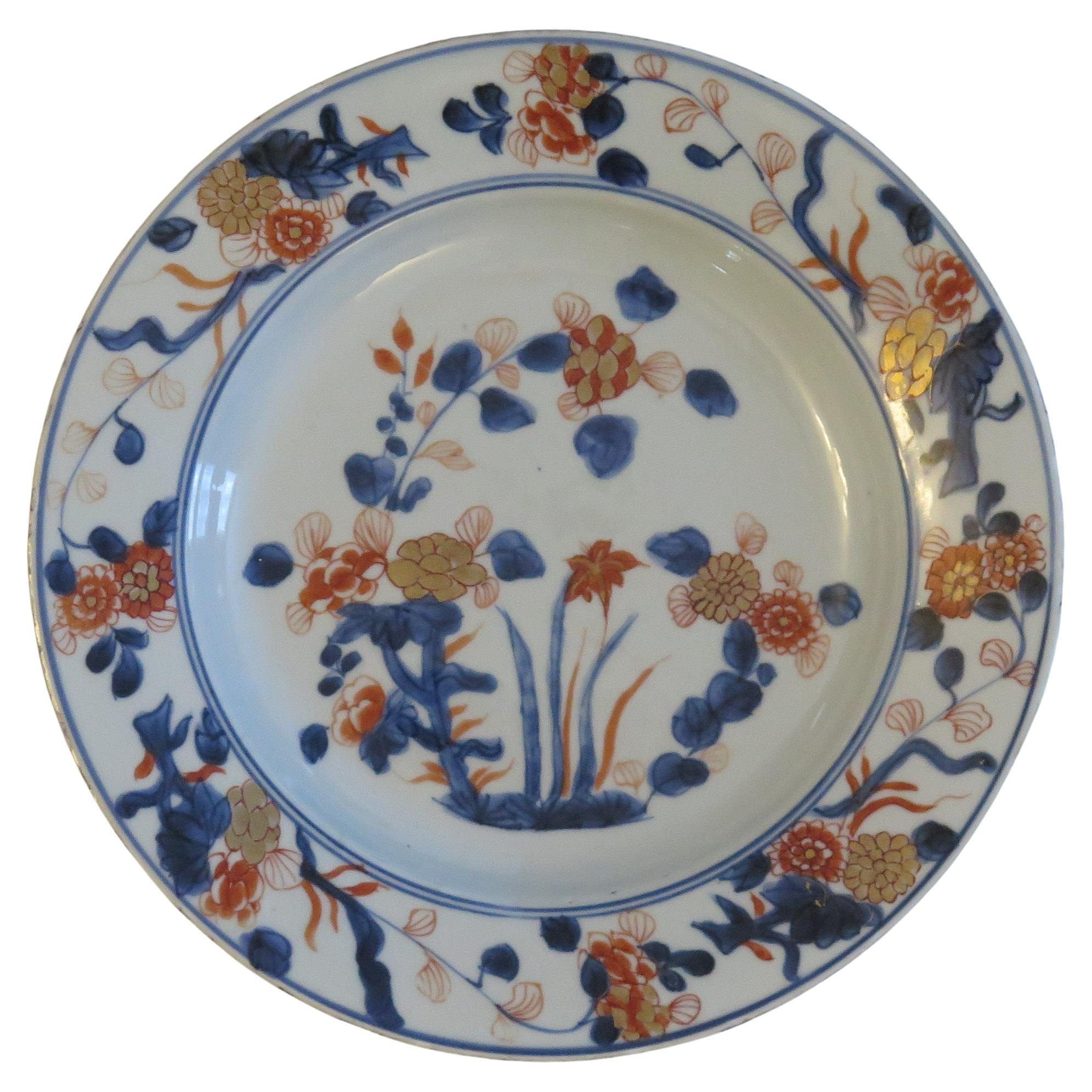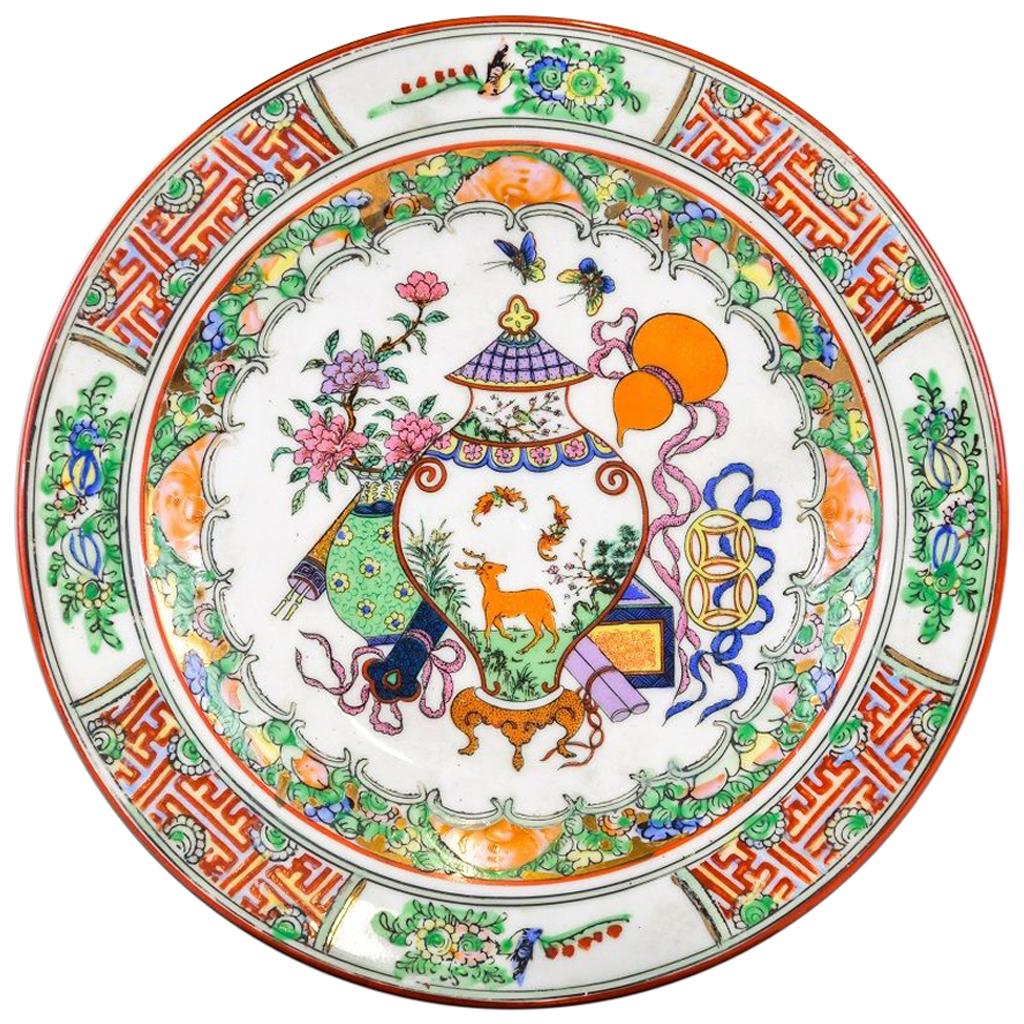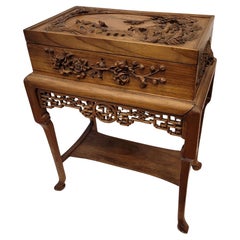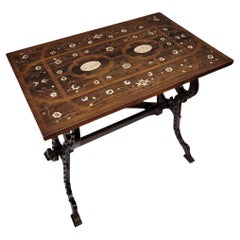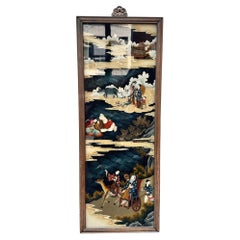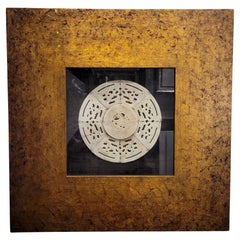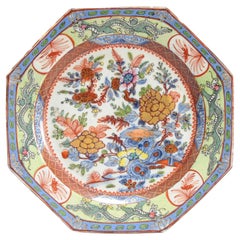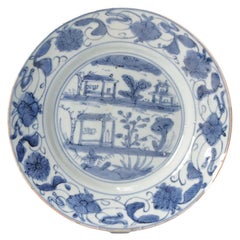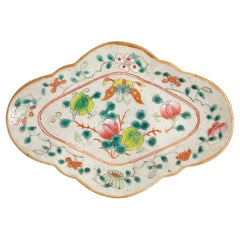Artículos similares a Chinese Qing porcelain plate, tray, Fitzhugh pattern, British East India Company
Cargando vídeo
¿Quieres más imágenes o vídeos?
Solicita imágenes o vídeos adicionales al vendedor
1 de 22
Chinese Qing porcelain plate, tray, Fitzhugh pattern, British East India Company
6002,10 €IVA incluido
Envío
Recuperando presupuesto…La promesa de 1stDibs
Garantía de autenticidad,
Garantía de devolución de dinero,
Cancelación dentro de las 24 horas
Acerca del artículo
Technical data
Materials: Porcelain tray, wooden legs
Period: Qing Dynasty
Country of origin: China
Good condition for its age and use, with some flaws in the wooden structure
Overall dimensions: 70 x 95 x 80 cm
Porcelain dimensions: 70 x 58 cm
Exquisite Fitzhugh pattern porcelain plate or tray, inlaid in a cabinet that highlights its oval profile and raised on four slightly curved square legs.
The term "Fitzhugh" refers to a type of Chinese export porcelain produced primarily between 1780 and 1840, featuring blue and white designs. It originated with three members of two generations of the Fitzhugh family. Members of this family held important positions as ship captains and even as directors in the British East India Company. Within this company, high-ranking officials were allowed to engage in private trade. Between 1704 and the 1790s, porcelain pieces bearing this pattern were shipped to England.
The design usually includes a central medallion, although it is occasionally replaced by a coat of arms or monogram. The medallion is surrounded by four groupings of flowers representing the four seasons—peony for spring; lotus for summer; chrysanthemum for autumn; and prunus for winter—and symbols that typically represent the four virtues of the Chinese scholar: music, painting, logical thinking, and calligraphy. The design is framed with a decorative border that may be a lattice and spearhead pattern, sometimes known by the term "Nanking," or a more elaborate border featuring butterflies, honeycomb shapes, and floral ornamentation. The definition of the Fitzhugh porcelain group has evolved throughout history in both Europe and America.
In England, authentic Fitzhugh porcelain refers to porcelain that replicates designs associated with William Fitzhugh, a purser in Canton who shipped porcelain to England in 1778, 1789, and 1791. This design consists of a central medallion, four floral clusters, and a trellis-diaper lattice border with a spearhead.
A unique opportunity to acquire a museum-worthy piece!
The British East India Company (1599-1874)
The British East India Company was founded in 1599 by English entrepreneurs to trade with the East Indies, breaking the Dutch monopoly on the spice trade. In 1600, it received a Royal Charter from Queen Elizabeth I granting it a trade monopoly with that region for 15 years. Over time, it transformed into a joint-stock company dominated by wealthy merchants and aristocrats, and although the British government held no shares, it did exercise indirect control. The company eventually handled half of the world's trade, especially in goods such as cotton, tea, silk, opium, and salt.
In 1702, it merged with a rival company and became a major commercial and territorial power in India, with its own army and government functions. Its effective rule in India began in 1757 and ended in 1858, when, following a rebellion, the British Crown took direct control through the Government of India Act. Finally, due to financial problems and political changes, the company was dissolved in 1874, and its functions were absorbed by the British government.
It was primarily established to trade with the East Indies, especially India and China. It traded in products such as spices, tea, silk, cotton, salt, opium, and more. It came to control certain territories in India, acting as a kind of private government, with its own armies, laws, and administrative system, which allowed it to play a key role in the expansion of the British Empire in Asia.
Although its primary function was not artistic, the company had a significant impact on art, mainly indirectly, as it sponsored works of art, encouraged the fusion of European techniques and Eastern styles, and fostered the export of art, textiles, and exotic objects that influenced European fashion and design of the time.
A museum piece!!!
Technical data
Materials: Porcelain tray, wooden legs
Period: Qing Dynasty
Country of origin: China
Good condition for its age and use, with some flaws in the wooden structure
Overall dimensions: 70 x 95 x 80 cm
Porcelain dimensions: 70 x 58 cm
- Creador:Margaret Fitzhugh Browne (Artista)
- Dimensiones:Altura: 70 cm (27,56 in)Anchura: 95 cm (37,41 in)Profundidad: 80 cm (31,5 in)
- Estilo:Exportación china (Del período)
- Materiales y técnicas:
- Lugar de origen:
- Época:1790-1799
- Fecha de fabricación:1798
- Estado:Desgaste acorde con la edad y el uso.
- Ubicación del vendedor:Valladolid, ES
- Número de referencia:1stDibs: LU2943345387002
Sobre el vendedor
4,7
Vendedor Oro
Vendedores premium que mantienen una calificación de +4,3 y tiempos de respuesta de 24 horas
Establecido en 1990
Vendedor de 1stDibs desde 2017
159 ventas en 1stDibs
Tiempo de respuesta usual: <1 hora
- EnvíoRecuperando presupuesto…Envío desde: VALLADOLID, España
- Política de devolución
Partes de esta página se han traducido automáticamente. 1stDibs no puede garantizar la exactitud de las traducciones. El inglés es el idioma predeterminado de este sitio web.
Garantía de autenticidad
En el improbable caso de que haya algún problema con la autenticidad de un artículo, ponte en contacto con nosotros en un plazo de 1 año para recibir un reembolso total. DetallesGarantía de devolución de dinero
Si tu artículo no es como se describe, sufre daños durante el transporte o no llega, ponte en contacto con nosotros en un plazo de 7 días para recibir un reembolso total. DetallesCancelación dentro de las 24 horas
Tienes un período de gracia de 24 horas para reconsiderar tu compra, sin preguntas.Vendedores profesionales aprobados
Nuestros vendedores de primera clase deben cumplir estrictos estándares de servicio para mantener la integridad de nuestros anuncios.Garantía de igualación de precios
Si encuentras que un vendedor publicó el mismo artículo por un precio menor en otro lado, igualaremos ese precio.Entrega global de confianza
Nuestra red de transporte de primera ofrece opciones de envío especializado en todo el mundo, que incluye envío personalizado.Más de este vendedor
Ver todoArcón lateral Indochina de la dinastía Qing, , madera tallada sobre patas
Por Paquement Vietnam
Preciosa arqueta lateral de la dinastía Qing tardía de Indochina, principios del siglo XX, con delantal y laterales tallados.
Combinando utilidad y estética, esta cómoda lateral de f...
Categoría
Antiguo, Principios del 1900, Vietnamita, Qing, Gabinetes
Materiales
Madera
Mesa auxiliar o buffet de estilo barroco italiano madreperla , hueso
Por Italian Sculptor 19 th Century
Sorprendente mesa auxiliar o bufé de estilo barroco del siglo XIX italiano con tablero de refinada marquetería floral de nácar y hueso sobre madera preciosa. Hermoso escenario flora...
Categoría
Antiguo, Década de 1860, Italiano, Barroco, Mesas de centro
Materiales
Hueso, Nácar, Madera
3781 € Precio de venta
Descuento del 20 %
Espejo chino Qing pintado al revés de la dinastía Qing
Por Chow's Oriental Furniture Co.
Impresionante espejo pintado al revés de la dinastía Qing del siglo XIX, que representa diferentes escenas en una narración vertical.
Diferentes escenas con elementos simbólicos y au...
Categoría
Antiguo, Década de 1870, Chino, Qing, Pinturas y biombos
Materiales
Cristal
Disco Bi verde asiático tallado y enmarcado, jadeíta
Por Chow's Oriental Furniture Co.
Exquisito disco bi de jadeíta tallado y enmarcado (璧). Un disco bi es un disco de jade circular (plano) con un agujero en el centro, utilizado en la antigua China. En este caso, se c...
Categoría
Vintage, Década de 1940, Chino, Exportación china, Antigüedades
Materiales
Cristal, Jade
Mesa esquinera roja española del siglo XVIII, consola, barroco andaluz
Por Soft Baroque
Destacada pieza representativa del Arte Barroco Español. Tiene una esquina Consola , la policromía es la original, conservada en rojo veneciano, que se combina con decoraciones en pa...
Categoría
Antiguo, Década de 1780, Español, Barroco, Mesas de consola
Materiales
Hoja de oro
2527 € Precio de venta
Descuento del 53 %
Mesa auxiliar francesa Charles X Costurero, madera y latón incrustado
Preciosa y muy refinada y elegante mesa en forma de costurero y hoja de Charles X , hacia 1830 Francia. Esta mesita auxiliar está hecha de madera de caoba e incrustaciones de hilo ...
Categoría
Antiguo, Década de 1830, Francés, Carlos X, Mesas ratonas
Materiales
Metal
670 € Precio de venta
Descuento del 21 %
También te puede gustar
Antiguo Plato Chino de Porcelana Ming Wanli Decoración Rara
Un plato muy bien decorado y de un tamaño poco común
14-11-18-1-1
Condición
Estado general a (Bueno) muchas rimfrits como es de esperar de este tipo de porcelana kraak...
Categoría
Antiguo, siglo XVI, Chino, Ming, Cerámica
Materiales
Porcelana
1440 € Precio de venta
Descuento del 20 %
Antiguo Plato de Porcelana China del Siglo XVIII con Sobredecoración Estilo Regencia
Una pieza de porcelana del siglo XVIII muy bien elaborada y decorada con una bella escena. Azul bajo vidriado y otros esmaltes sobre vidriado realizados posteriormente en Europa.
Tam...
Categoría
Antiguo, siglo XVIII, Chino, Regencia, Bandejas y platos decorativos
Materiales
Porcelana
1349 € Precio de venta
Descuento del 20 %
Antiguo Plato de Porcelana China Ming/Transicional, Casa Europea, Pieza Rara
Realmente encontré algo intrigante. Este plato está decorado con lo que a menudo se consideran casas europeas. Algo visto en los platos y cuencos Kraak de Transición. He tomado prest...
Categoría
Antiguo, siglo XVI, Chino, Ming, Cerámica
Materiales
Porcelana
3998 € Precio de venta
Descuento del 20 %
Plato chino wucai, siglo XIX
Plato chino wucai, siglo XIX
Decoración del hogar, Interiorismo y objetos de colección.
Procedencia: Colección privada Victoria.
Dimensión:
Altura: 4...
Categoría
Antiguo, siglo XIX, Chino, Qing, Cerámica
Materiales
Porcelana
108 € Precio de venta
Descuento del 50 %
Plato o Cuenco de Porcelana China Marca y Periodo Qing Kangxi, Ca 1700
Se trata de un plato o cuenco de porcelana china de exportación, bellamente pintado a mano, del periodo Qing, Kangxi, 1662-1722, totalmente marcado en la base con la marca Artemisia ...
Categoría
Antiguo, principios del siglo XVIII, Chino, Exportación china, Cerámica
Materiales
Porcelana
Plato de porcelana china vintage, fabricado en China, principios del siglo XX
Este plato de porcelana es un objeto decorativo original realizado en China por manufactura china, a principios del siglo XX.
Está decorada con ornamentos geométricos y florales ...
Categoría
principios del siglo XX, Chino, Antigüedades
Materiales
Cerámico
196 € Precio de venta
Descuento del 30 %
